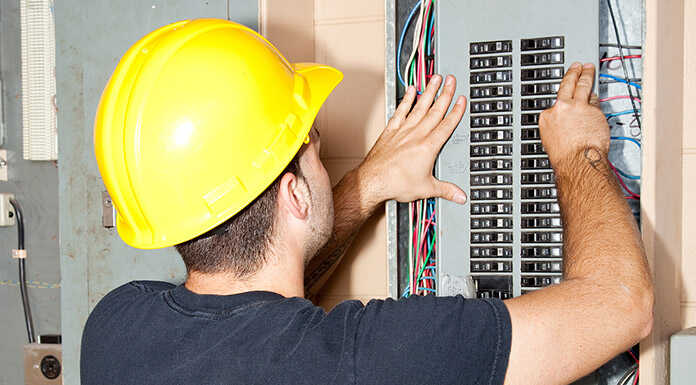According to the Bureau of Labor Statistics (BLS), in 2019, there were 166 electrical fatalities and 1,900 nonfatal injuries with lost time from work. The construction industry had the highest rate of fatal electrical injuries, followed by maintenance and then building grounds. Additionally, overhead powerlines caused over 40 percent of all electrical accidents on construction job sites, and most of these incidents involved nonelectrical workers.
Spotting electrical hazards, whether on a job site, in a warehouse, or building maintenance or manufacturing facility, can be difficult if there isn’t a hazard identification process in place. When workers get shocked or electrocuted, they often never even realize the electrical hazard exists. This is why it’s important to conduct regular hazard assessments and daily safety observations focused on identifying and correcting electrical hazards.
The construction industry had the highest rate of fatal electrical injuries, followed by maintenance and then building grounds.
Bureau of Labor Statistics
Follow these safety tips
Electrical safety hazards are regularly on OSHA’s top 10 most cited violation list, and electrocution has been added to OSHA’s Fatal Four awareness campaign. To reduce the risk of electrocution or electrical-related incidents, implement and follow these safety tips.
General Electrical Safety
- Provide employees with regular training on electrical hazards that are more likely to be encountered at your job sites or workplace.
- Require employees to immediately report any electrical hazard or damage to machinery, equipment or tools operated by electricity.
- Conduct regular hazard assessments of the job site and work areas. Focus on identifying and controlling electrical hazards. The Electrical Library of Construction Occupational Safety & Health (elcosh) has an example electrical hazard checklist you can download.
- Only qualified persons should work on live electrical wires. Outsource any electrical work to qualified contractors.
- Shut the power off to electrical systems. If you’re not using an electrical system, then there is no need to keep it energized. Shut the power off until it’s absolutely needed.
- Always use lockout/tagout procedures when working on machinery, equipment or systems run by electricity.
Overhead Power Lines
- Look up! Remember overhead powerlines caused over 40 percent of all electrical accidents on construction job sites. Provide training for employees and remind them always to look up and account for overhead power line hazards.
- Contact utilities for buried power line locations.
- Stay at least 10 feet away from overhead power lines.
- Unless you know otherwise, assume that overhead lines are energized.
- De-energize and ground lines when working near them. Other protective measures include guarding or insulating the lines.
- Use non-conductive wood or fiberglass ladders when working near power lines.
Ground Fault Protection
- Use ground fault circuit interrupters (GFCI)s on all 120-volt, single-phase, 15- and 20-ampere receptacles, or have an assured equipment grounding conductor program (AEGCP).
- Follow manufacturers’ recommended testing procedure to ensure GFCI is working correctly.
- Use double-insulated tools and equipment, distinctively marked.
- Use tools and equipment according to the instructions included in their listing, labeling or certification.
- Visually inspect all electrical equipment before use. Remove from service any equipment with frayed cords, missing ground prongs, cracked tool casings, etc. Apply a warning tag to any defective tool and do not use it until the problem is corrected.
Path to Ground Missing or Discontinuous
- Ground all power supply systems, electrical circuits, and electrical equipment.
- Frequently inspect electrical systems to ensure that the path to ground is continuous.
- Visually inspect all electrical equipment before use. Take any defective equipment out of service.
- Do not remove ground prongs from cord- and plug-connected equipment or extension cords.
- Use double-insulated tools and equipment, distinctively marked.
- Ground all exposed metal parts of equipment.
Proper Use of Extension and Flexible Cords
- Do not use equipment outdoors that is labeled for use only in dry, indoor locations.
- Use factory-assembled cord sets.
- Use only extension cords that are 3-wire type.
- Use only extension cords marked with a designation code for hard or extra-hard usage.
- Use only cords, connection devices, and fittings equipped with strain relief.
- Remove cords from receptacles by pulling on the plugs, not the cords.
- Continually audit cords on-site. Any cords found not marked for hard or extra-hard use or which have been modified must be taken out of service immediately.
Remember that many workers are unaware of the potential electrical hazards in their work environment, making them more vulnerable to the danger of electrocution. Be sure to provide training and implement a formal process for identifying workplace hazards.

















